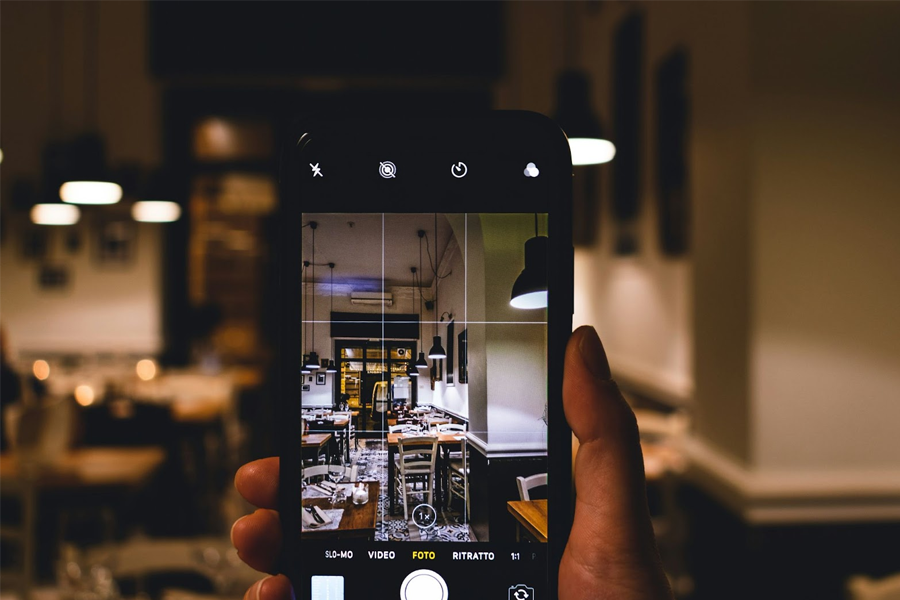
In a digital age where thanks to social media everyone has a voice that they can share with everyone else, user-generated content (UGC) is on a steady rise.
Customers can now share their online reviews and opinions of your brand on their social media channels which can go viral and influence public perception of your brand’s identity. Therefore, neglecting UGC in your marketing strategy can decrease your sales and growth rate.
To win the hearts of your customers and add life to your ecommerce business, you need a proper breakdown of how consumer generated content works. This article will take you through the factors that make user generated content important, and how you can benefit from it while overcoming the challenges involved for your business.
What is User-Generated Content (UGC) in Ecommerce?
User-generated content (UGC) is any type of content that customers create to share their genuine opinions, reviews, ratings and perception of your brand. Such customers’ content can be a blog or other text-based post, any type of video content, and even a podcast.
It is mostly shared on social media platforms, which has a wide enough reach that allows you to use UGC in your marketing campaigns to attract new customers and convince your leads to make a purchase. The reason is that 70% of consumers use user-generated reviews to judge whether or not to buy a product.
Benefits of UGC for Ecommerce Businesses in The USA
Many successful ecommerce businesses in the United States include UGC in their marketing campaigns because of the benefits that come with it. Below are the major benefits of UGC for ecommerce businesses.
It enhances trust
Consumers trust content created by “real” people, because it’s not barred by marketing messages.
New or returning customers may rely on the existing brand reputation to an extent, but when they can see your products in action without the glitter of the content generated by the brand itself, more potential customers are convinced to make a purchase.
It boosts brand awareness
UGC is one of the fastest ways to boost brand awareness because more people are drawn to your brand when they come across a UGC that’s relatable and relevant to their pain points.
Social media algorithms work in such a way that the more users interact with a post, the bigger the chances are of it going viral. In utilizing this social strategy, you further expose your brand to potential new customers.
It fosters brand loyalty
When you use UGC, it signals to your customers that you care about their feedback. User-generated posts are perceived as a sign of transparency, because through your brand’s social media you can respond to comments and show how much you are working to improve.
This makes it possible for any UGC content strategy to be considered a more than reasonable approach that influences brand loyalty without creating content yourself, while pulling the attention towards your offerings and spreading your messaging far and wide.
Improves customer shopping experience
A seamless shopping experience is a value you should strive to offer your customers because they recognize and appreciate it. You can achieve this with user-generated content.
Customers will return to your ecommerce store when they see reviews and photos of real users of the product displayed on product pages.
It humanizes your brand
Using UGC as a part of your marketing efforts and advertising campaigns can humanize your brand and help you connect on a deeper level with the portion of your customers who value authenticity.
As a result, your brand identity is forged as memorable to old and new customers because it has valuable user-generated content. Upon seeing other users creating UGC about your products and eventually your feedback to those social posts as well, people tend to think of the humans behind the product or service. That, in turn, makes them more prone to giving it a chance just like others have.
UGC grows your content library
You need content to grow your ecommerce business because it engages and converts leads into customers. However, it can be challenging to constantly plan and create content on your own.
Having users submit content allows you to add more useful material to your archives for whenever you need to publish engaging and relevant content. At the same time, what doesn’t serve you outside of publications, you can take as feedback and improve your products and services.
Increases your conversion rates
UGC works well in increasing your conversions because shoppers consider reviews and ratings from other users before trusting you with their own money.
Incorporating UGC into your ecommerce store will push customers from the awareness stage further down to the decision stage faster than many forms of brand-generated marketing would.
It strengthens social proof
Consumers will not give you their money if they’re not convinced you’re trustworthy. In addition to having an emotional response to the post content, to many, that’s one of the conditions for making purchasing decisions.
Brand-specific content created by other users is an extremely effective method to strengthen social proof, signaling to the rest of your audience that you can deliver value for their money.
It produces authenticity
You can’t neglect authenticity in the world of ecommerce. Consumers trust authentic content that doesn’t seem forceful and like it’s produced by media organizations focusing all their effort on ads.
That’s where UGC comes into play. Through it, shoppers can sense that you are genuine, and that makes it much safer in their minds to purchase your products.
It encourages community engagement
Using UGC in your marketing for your ecommerce business helps you grow the brand’s community – a group of users consistently engaging with your content; a group that trusts every one of your offerings.
You stimulate your brand’s growth and raise awareness while keeping the user-base active. But what’s more, you create a lasting connection with existing customers that many brands only dream of.
It is cost-effective
One of the most important benefits of UGC for your ecommerce business is that it is cheaper.
Creating your branded content comes at a higher cost because of the time and human resources you’ll need.
It boosts SEO
Your website also benefits from UGC as shoppers and users who leave reviews on it help increase its search engine rankings. The reason is the unique, keyword-rich content that’s regularly updated on your pages.
Then, when you make a post on a social media platform from the reviews published on your website, it directs traffic back to the links, increasing your domain authority.
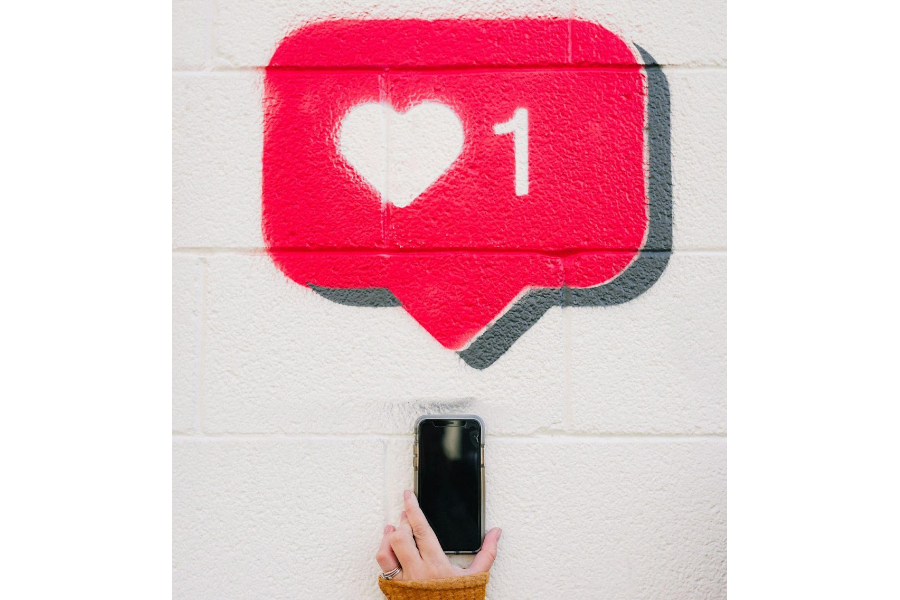
Challenges of Implementing UGC in Ecommerce
UGC can be challenging to implement if you are not experienced. In the paragraphs below, you can see a few challenges you may encounter.
Gaining of the UGC Content Rights
Before posting or repurposing user content on your online platforms, you’ll need the permission of the original creator. Without gaining content rights from the user, you may face legal action.
Gaining user rights from each original content creator can be challenging when you are using UGC in your marketing across social media and other channels. To facilitate the process, user-generated content rights software can come in handy. It helps you acquire content rights from owners and integrate UGC on your social platforms effortlessly.
Maintaining Content Quality and Relevance
Another challenge of implementing UGC are the inconsistencies in content production from each unique user. You already have a set of internal guidelines for maintaining content quality but users will not always meet them.
This can be frustrating. To solve this challenge, sing a social media aggregator tool that comes with a content moderation tool is one way to go. It serves to integrate relevant user generated content and exclude insignificant content in order maintain the quality of the selection of your UGC.
Managing Negative Reviews and Feedback
You can’t control the content created by the users to express how they feel about your product or service. This can be challenging because negative content can damage consumer trust.
You must manage and moderate it so that it does not undermine your marketing strategy.
To achieve this, use software tools and platforms that allow you to detect and exclude UGC that breaks your guidelines and standards. However, don’t forget to be open to constructive and honest feedback when it’s relevant to your brand.
How to Encourage and Manage UGC for Your Brand
UGC can help you build a relevant and engaging content bank.
Follow these tips to manage and encourage your customers to share user-generated content for your brand:
- Request feedback from users: Many users will leave a review when you ask them kindly. You can send an email to remind them about dropping a review and to spice up the offer, you can also offer them a little bonus like a small discount for their next purchase, or something similar.
- Start unique hashtags: Creating your own branded hashtags that easily stand out will help to increase brand awareness on social media and find user generated content easily. For example, the #SpotifyWrapped hashtag helps users to identify with the Spotify brand with a focus on users’ music experience.
- Observe customer trends: Customer trends can help you judge and analyze the types of user generated content that customers prefer. You’ll also learn the topics, themes, or formats that work best in encouraging customers to create and share UGC exhibiting a specific brand sentiment.
- Organize an Instagram photo contest: You can get more user generated content for your brand when you organize a photo contest on Instagram. You’re likely to also enjoy new followers, increased engagement, and even new leads.
- Monitor social media mentions: Customers randomly share their recommendations on social media and sometimes, you can get a mention. A way to manage your UGC marketing strategy is using social media automation platforms to track mentions in real time. This will enable you to appreciate them quickly and request permission to repurpose or repost the UGC.
- Create an employee engagement initiative: To promote your company culture, along with your products, you can have employees share their own experience. And you can award them for it. In fact, you may be surprised to find out that some of them may be doing it already without your direct involvement.
Brand advocates save a lot of work, and when that’s a professional network of your own employees, it can impact your follower base extremely positively. According to LinkedIn, creating a social media account for employee-generated content can significantly boost UGC for your brand.
- Start an ambassador project: An ambassador project positively affects the morale of brand loyalists because with it, they can enjoy exclusive perks and benefits while providing you with rich UGC for your content bank. As you launch such a project, make sure to notify your fans and followers about the terms of the program and other benefits that come with it.
- Offer incentives. People like free stuff, which is one of the main reasons why freebies work well in encouraging brand generated content with users at the forefront. Focus on the output of amazing content by your audience rather than on the cost you’ll bear. When your incentive is motivating enough to encourage customers to create their best UGC, you can get a lot more than you may expect. Nevertheless, be careful to not go beyond your budget.
Use these approaches to stimulate your audience members and move your brand forward with the least amount of effort on your end.

Best Practices for Using UGC in Marketing Campaigns
There are multiple ways to successfully implement user generated content, as other marketing campaigns from companies have shown. Here a few best practices you can follow:
- Always credit back the original content owner: When you repost any customer photos, text or quotes, ensure you give proper credit to the original creator of the UGC by tagging them in your caption. When you do this, you’ll benefit from more exposure, especially on Instagram where your post will appear on your page and that of the account you tagged.
- Request permission to use photos or videos: You can’t use photos or videos in your marketing without the direct permission of the content owner. Send an email or a direct message and be clear on your compensation package. Don’t move forward with the content in your campaigns unless you get a permission from the owner.
- Simplify the creation process for users: Increasing the UGC in your content repository starts with a concept that’s simple to create. Complex concepts take more effort and may discourage users from participating in the creation process.
An example of this is during the Coca-Cola “Share a Coke” campaign that only required customers to take a photo of their name on a bottle and share it on social media along with the respective hashtag.
And of course, never fake it. Faking UGC is counterproductive because the purpose of user generated content is to create trust and authenticity.
Case Studies: Successful UGC Campaigns in Ecommerce
A UGC campaign that strikes the right chord can improve your presence on social channels, engage your customers and boost your overall online sales and revenue.
If you need inspiration, look no further! We’ve compiled a list of examples of successful UGC campaigns for you. Check them out below.
Starbucks #RedCupContest
Starbucks’ UGC strategy using a seasonal topic like Christmas and home coziness is one of the most successful ever, receiving 40,000+ images from social media users when the brand asked customers to share photos of their red coffee cups.
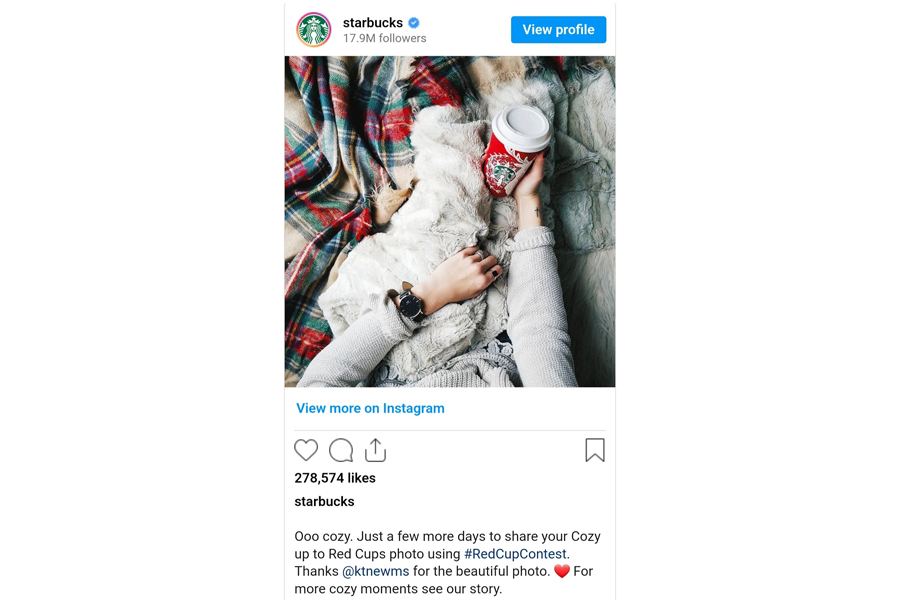
Shein’s “clothing hauls”
Aa a fashion ecommerce brand, Shein, leverages UGC to succeed in driving more sales and engagement online. Shein is known for reposting UGC images and videos of customers trying out their products.
This campaign has become successful over the years, strengthening the brand’s global presence.
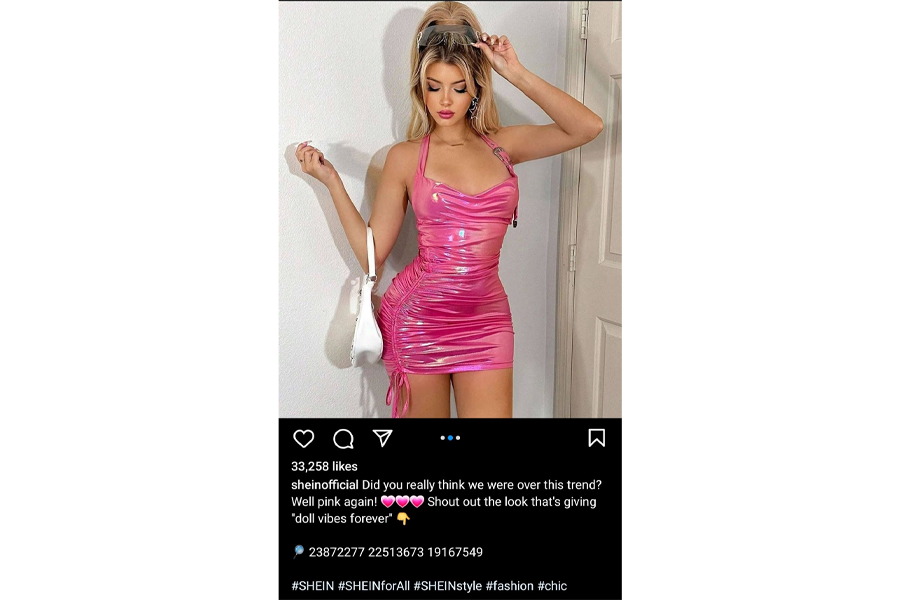
Glossier
90% of Glossier’s revenue is through unpaid word-of-mouth marketing and UGC is part of the makeup brand’s rise to success.
Through influencer marketing on Instagram focusing on the beauty industry, the company gets popular internet personalities to post product reviews and photos with the #glossier hashtag ahead of product releases. Doing this allows Glossier to capture a much wider user base on multiple platforms without relying solely on its own content.
Wayfair
Wayfair is an online furniture store that has used UGC in almost every marketing campaign to drive sales, convert new leads and display social proof. They’ve developed a unique hashtag – #WayfairAtHome, and encouraged customers to post their house setups that include Wayfair products.
The brand posts these photos on its social media pages with a shopping link that subtly nudges users further down the sales funnel. This campaign is so successful because it uses UGC in a subtle yet effective way.
Cold Stone Creamery
Cold Stone warms their way into the hearts of people by posting beautiful shots of their customers enjoying a cup of ice cream.
This deft incorporation of UGC in their marketing attracts new customers and sustains brand loyalty for the ice cream company.
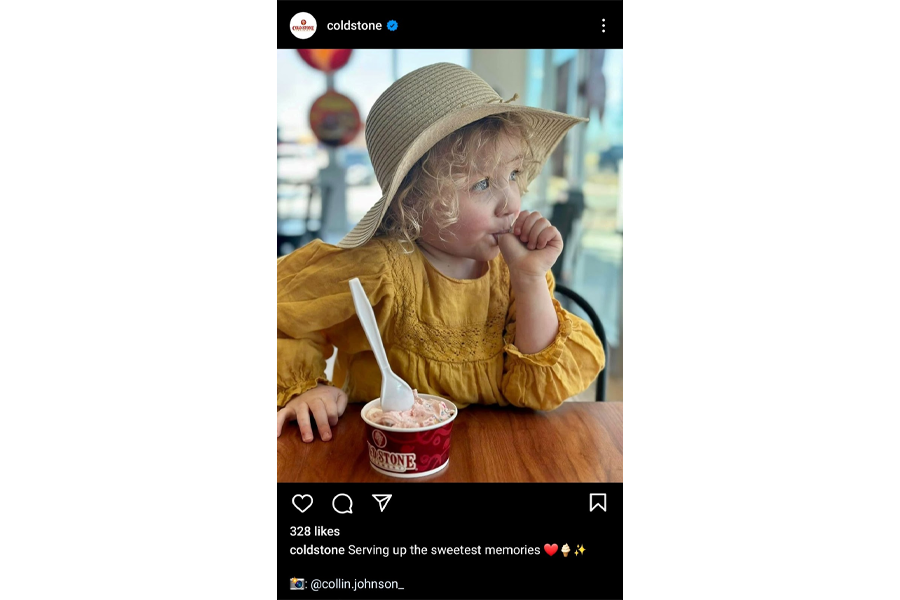
Lulus Fan Photos
Last but not least, there’s Lulus Fan Photos. The women’s clothing company allows customers to upload photo reviews indicating their size and body type which are then displayed on product pages alongside the product descriptions for shoppers to see how the clothes can look on a real user.
This type of UGC has increased conversions and built trust for the clothing brand.
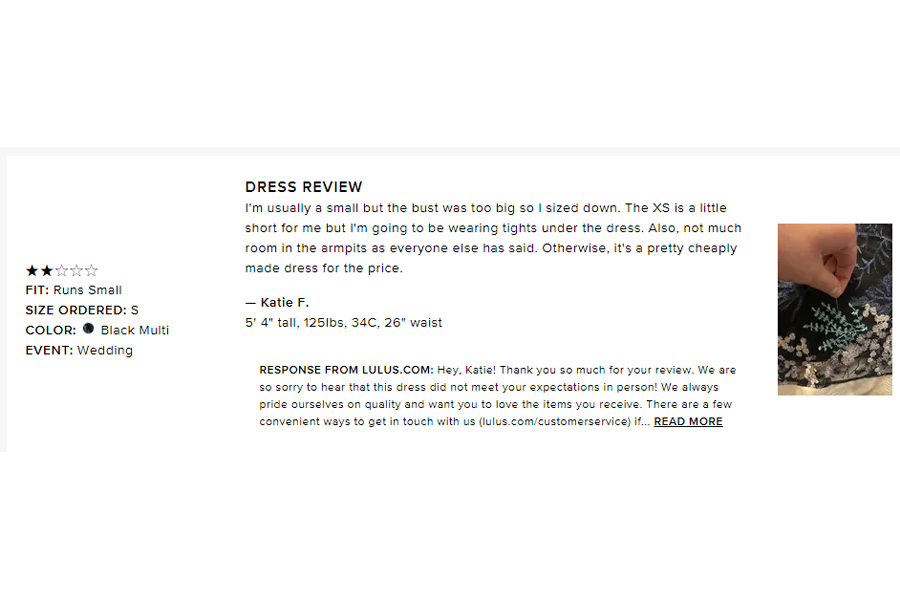
Trends and Opportunities in 2024
Here are some trends and opportunities that brands looking to leverage UGC marketing can explore:
- Micro-Influencer Collaboration: This is an opportunity for brands to grow their social media presence along with trendsetters who command a dedicated follower base. None of them may be a professional marketer, but it is also precisely because of this that their social media posts can sometimes have a significant impact on users wondering whether it’s worth it.
- Customer Loyalty Programs: A brand’s UGC marketing strategy can be maximized into customer loyalty programs to reward contributors and loyalists who have helped the brand in building a powerful image and story over time.
- Response to Criticism: Criticism is often feared but it can be transformed into a valuable tool to shape public perception in your UGC marketing. Don’t delete negative reviews hastily, as long as they are not distasteful. Instead, show your professionalism by composing an accurate and dignified response, reinforcing your commitment to customer satisfaction.
- Short-form Content: This growing trend in UGC is here to stay, considering the popularity of TikTok, Instagram Reels, and YouTube Shorts. Your brand will benefit from following this trend while leveraging UGC because users are unlikely to stop making short form videos that are entertaining and user-centric.
- AI: AI is a growing trend impacting the future of UGC. New tools and technologies will be introduced not only for the creation of captions, but even for SEO and creative ideas for UGC. With a proper implementation of AI technology, brands can infuse captivating and authentic ideas into repurposing UGC for sales and business growth.
- And finally, there’s real-time content. Real-time content creation is an emerging trend that will not die out soon, especially with the present possibility of live streaming on your Instagram, TikTok, YouTube, and Facebook page.
Ecommerce platforms are joining this trend. Companies such as South Korea’s Coupang take product reviews and allow them to be displayed in real-time on their app and website.
As more brands invite creators to make live content, UGC can be expected to grow and become a much more prevalent form of marketing.
Frequently asked questions
What is User-Generated Content?
User-generated content is all types of content, including: photos, videos, gifs, blog posts, as well as podcasts that a customer or user of a product creates and shares on social media or any other online platform. A UGC piece can contain the user’s review, rating, and/or opinion of the product or brand.
What is an example of UGC?
UGC can either be positive or negative. An example of UGC is an unboxing video that the user uploads on YouTube or Instagram.
What are the benefits of User-Generated Content?
Some of the benefits of UGC for your brand include increased exposure to a wider audience, deeper connection to your audience, strengthened social proof and increased conversion rates.